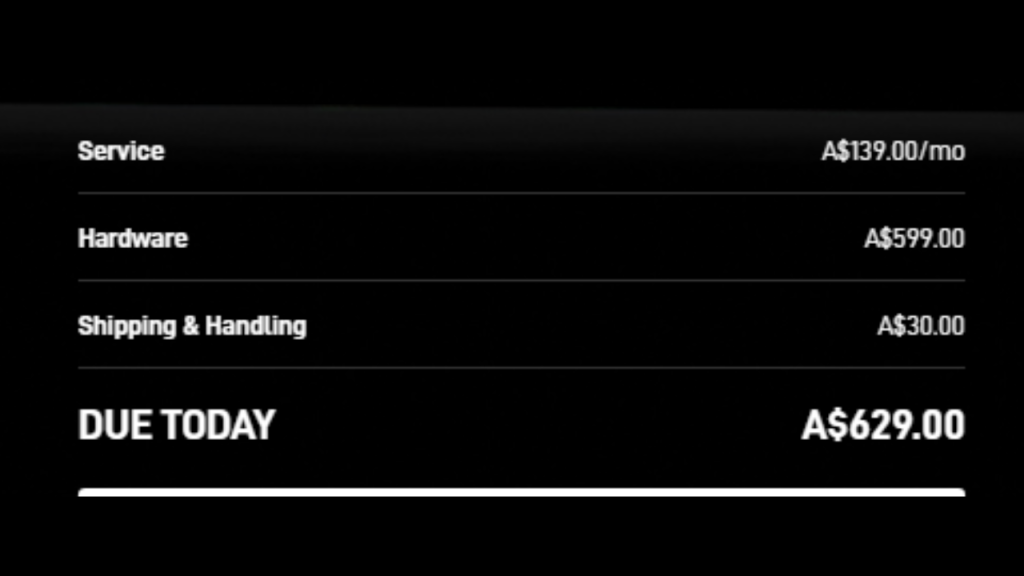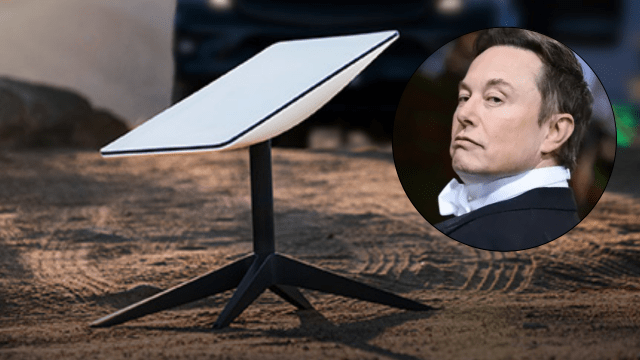After launching three years ago, Elon Musk/SpaceX’s Starlink is very much working in Australia. The internet service began rolling out to select areas of the country in a beta and now with the beta now long over, you can freely order a Starlink service. But what is Starlink, and is it any better than the NBN?
Here’s your guide to Starlink, how much it costs, and what you should know about SpaceX’s internet solution.
What is Starlink?
Starlink is a satellite internet service that operates internationally, reliant on a network of hundreds of low-Earth orbit satellites that beam an internet connection from space and to your home via a satellite dish. It’s a high-speed internet alternative to the NBN and 5G, although due to transmission distance, latency takes a hit, making it not an ideal solution for things like gaming.
Is Starlink available in Australia?
Starlink is out of beta, which means that you can now preorder the service in Australia. Head over to the website and see if your address is available. If you’re interested in the Starlink satellite map, you can find a handy third party tracking website here.
How much does Starlink cost in Australia?
Plugging your address into the website reveals that the total cost of the consumer service per month is $139. However, a $599 hardware fee and $30 shipping fee will also be incurred. That brings the price to start off to a total of $768, plus recurring monthly charges of $139.

The business plan offers speeds of between 150Mbps and 500Mbps for $750 per month, with a setup fee of about $3,740 (of course this is only available to business customers).
Additionally, you can also order a Telsa service that uses Starlink hardware. This costs $125 per month, plus a one-off $599 hardware fee, for 50Mbps download and 10Mbps upload speeds (slower than standard Starlink).
How many plans does Starlink offer?
At the moment, Starlink offers two plans. The normal plan offers unlimited data with speeds between 100Mbps and 200Mbps, billed at $139 per month. The business plan offers unlimited data with speeds between 150Mbps and 500Mbps for $230, $374 or $748 per month, depending on data allowance. Again, Telstra also offers a Starlink-leveraging plan, but it is not a Starlink-operated plan.
How fast is Starlink?
According to Starlink, users can expect speeds of between 100Mbps and 200Mbps on the service. Additionally, users can expect latency as low as 20ms “in most locations”.
According to Ookla, a website that measures internet speeds, Starlink users can experience download speeds of about 106Mbps on average and upload speeds of 11Mbps. Latency is reported at 66ms on average. This information comes from Ookla’s Q1 2023 Starlink report.
Additionally, Telstra’s new Starlink plan can supposedly achieve max speeds of 50Mbps download and 10Mbps upload.
How does Starlink compare to the NBN?
In terms of base speed, Starlink appears to offer a faster home internet experience than the NBN, with speeds of between 100Mbps and 200Mbps, depending on the conditions.
One of the most popular fast NBN plans, NBN 100, is capable of speeds up to 100Mbps, the low point of a Starlink plan (though this will likely be upgraded to NBN 500 in the coming year). There are, however, NBN 250 and NBN 1000 plans available that will outpace Starlink, though these are limited to fibre and HFC connections.
That being said, it’s also more expensive than most NBN plans. At $139 per month, and with high starting costs, it’s difficult to say that it offers better value than the NBN.
Just on latency for a minute: NBN plans typically experience latency of between 8ms and 20ms, which is of course much better than what Starlink offers.
Due to the latency, it’s probably not worth getting a Starlink plan if you have a fixed-line NBN plan if you’re an avid gamer, however if you rely on satellite internet, you should consider it.
Does Elon Musk own Starlink?
Elon Musk himself doesn’t own Starlink, but Musk’s space company, SpaceX (of which he owns a 42 per cent stake and 79 per cent of voting power), operates the internet company.
How does this compare to NBN Sky Muster satellite plans?
Starlink’s biggest point of difference to the majority of the NBN is that it’s a satellite service. This means it can service areas that copper or fibre NBN can’t due to infrastructure limitations.
This is particularly relevant to a country as big as Australia, but we do already have Satellite internet.
Satellite NBN, or Sky Muster, is similar to Fixed Wireless in that it’s for rural areas that can’t connect to the NBN (or even 4G) in any other way. However, it takes it a step further as it’s able to service remote areas that don’t have stable 4G access.
The problem with Sky Muster is that it can really slow compared to other NBN services, though NBN Co has been working to improve this. Starlink does, at the time of writing, seem to offer higher base speeds.
Can I take my Starlink satellite dish elsewhere?
When you order a Starlink service, it will be tied to the property you order that service to. While the dish you receive from Starlink is widely portable, you’ll need to keep it at the same address for the service to work.
Starlink also allows customers to take the dish on the go for about $35 per month (local pricing is still to be confirmed).
Should I get a Starlink service?
If you live in a remote part of Australia and need a stable, reliable internet connection, you should probably consider Starlink. Though Skymuster offers a reasonable internet service, Starlink undoubtedly offers better performance, though it is far more expensive.
However, if you have a fixed-line internet service, it’s tough to recommend Starlink. You’ll be paying more for the setup and for ongoing costs than on most NBN plans, and although Starlink typically sees average speeds of 106Mbps (via Ookla), NBN 250 and NBN 1000 will outpace it – not to mention latency will certainly be better on a fixed-line service.
This article has been updated since it was first published.
